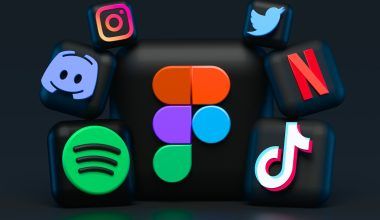Making music is an incredible journey, but getting it out into the world can sometimes feel like climbing a mountain. Traditionally, artists rely on distributors to put their songs on streaming platforms like Spotify, Apple Music, and more. However, if you want to take control and avoid middlemen, you can absolutely upload your music on all streaming platforms without a distributor. Let’s explore how you can make that happen while keeping things straightforward and manageable.
Why Bypass a Distributor?
Before diving into the how-to, let’s talk about why you might want to skip the distributor route. Distributors charge fees or take a cut of your earnings. This can feel restrictive, especially if you’re an independent artist on a budget. Additionally, going solo gives you complete control over your music, metadata, and release strategy.
By uploading your music directly to streaming platforms, you’re cutting out the middleman, which can save you money and help you retain more of your royalties. Plus, you gain the flexibility to update your music and profiles on your own terms.
The Platforms You’ll Be Targeting
To reach as many listeners as possible, you’ll need to upload your music on major streaming platforms. These include Spotify, Apple Music, Amazon Music, YouTube Music, and Deezer. There are also niche platforms like Tidal and SoundCloud that cater to specific audiences. Having your music on all these platforms increases your chances of being discovered.
It’s important to note that each platform has its own rules and requirements. Some platforms allow direct uploads, while others may require you to work with specific partners. Knowing these nuances will help you navigate the process smoothly.
Get Your Tracks Ready for Upload
Before you start uploading, it’s crucial to prepare your music files properly. Here’s a quick checklist:
- Audio Quality: Ensure your tracks are in high-quality WAV or FLAC format. Most platforms require lossless audio for uploads.
- Metadata: Add essential information like song title, artist name, album name, and genre.
- Album Art: Design eye-catching cover art that meets the size and resolution standards of streaming platforms. Generally, 3000×3000 pixels in JPEG or PNG format works best.
- Lyrics: If your songs have lyrics, consider preparing them for display. Some platforms support synchronized lyrics for karaoke-style experiences.
When your tracks are polished and your metadata is complete, you’re ready to move on.
Platforms That Allow Direct Uploads
Fortunately, some platforms let you upload your music directly without the need for a distributor. Here’s how to do it on a few of the biggest ones:
Spotify
Spotify’s direct upload option is no longer available for independent artists. However, you can still use platforms like SoundCloud or Bandcamp to sync your music to Spotify. Alternatively, consider Spotify’s for Artists feature to claim your profile and manage your releases once they’re live.
SoundCloud
SoundCloud remains one of the best platforms for direct uploads. Simply create an account, click the “Upload” button, and follow the prompts. SoundCloud supports WAV, FLAC, AIFF, and MP3 formats. Don’t forget to add tags and descriptions to make your music more discoverable.
YouTube Music
You can upload your tracks to YouTube Music by setting up a YouTube channel. Once you’ve created your channel, upload your music videos or audio files with a static image. Make sure to add detailed descriptions, tags, and links to your other platforms in the video’s description.
Bandcamp
Bandcamp is another excellent option for direct uploads. It’s especially useful for selling your music alongside streaming. Simply create a Bandcamp account, upload your tracks, and set your price. Bandcamp lets you control your pricing and earnings, making it a favorite among indie artists.
While some platforms allow direct uploads, others like Apple Music and Amazon Music require specific tools or partnerships. Here’s how to navigate these:
Apple Music
To get your music on Apple Music, you’ll need an iTunes Connect account. Once registered, you can use Apple’s Music Tool to upload your songs. It’s a bit more technical, but Apple offers detailed guides to help you through the process.
Amazon Music
Amazon’s Artist Central allows you to claim your profile, but direct uploads aren’t supported. Instead, you can use platforms like CD Baby or TuneCore to sync your music to Amazon.
Deezer
Deezer allows direct uploads via Deezer for Creators. You’ll need to create an account and follow their guidelines for uploading music.
Maximizing Your Reach
Once your music is live, you’ll want to promote it. Share your links on social media, create engaging content around your releases, and consider pitching your tracks to playlists. Platforms like Spotify and YouTube offer tools to help you understand your audience and tailor your promotional efforts.
Remember, uploading your music is just the beginning. The real magic happens when you connect with your listeners and grow your fanbase.
Conclusion
Uploading your music on all streaming platforms without a distributor might take a little extra effort, but it’s completely doable. With the right preparation and a clear strategy, you can share your music with the world on your terms. Start small, stay consistent, and watch your audience grow. The world is waiting to hear your songs—so let’s get them out there!
Related Articles:
For further reading, explore these related articles:
- How to Release Music to Spotify: A Step-by-Step Guide
- How Much Do Artists Make Per Stream on Spotify?
For additional resources on music marketing and distribution, visit DMT Records Private Limited.






